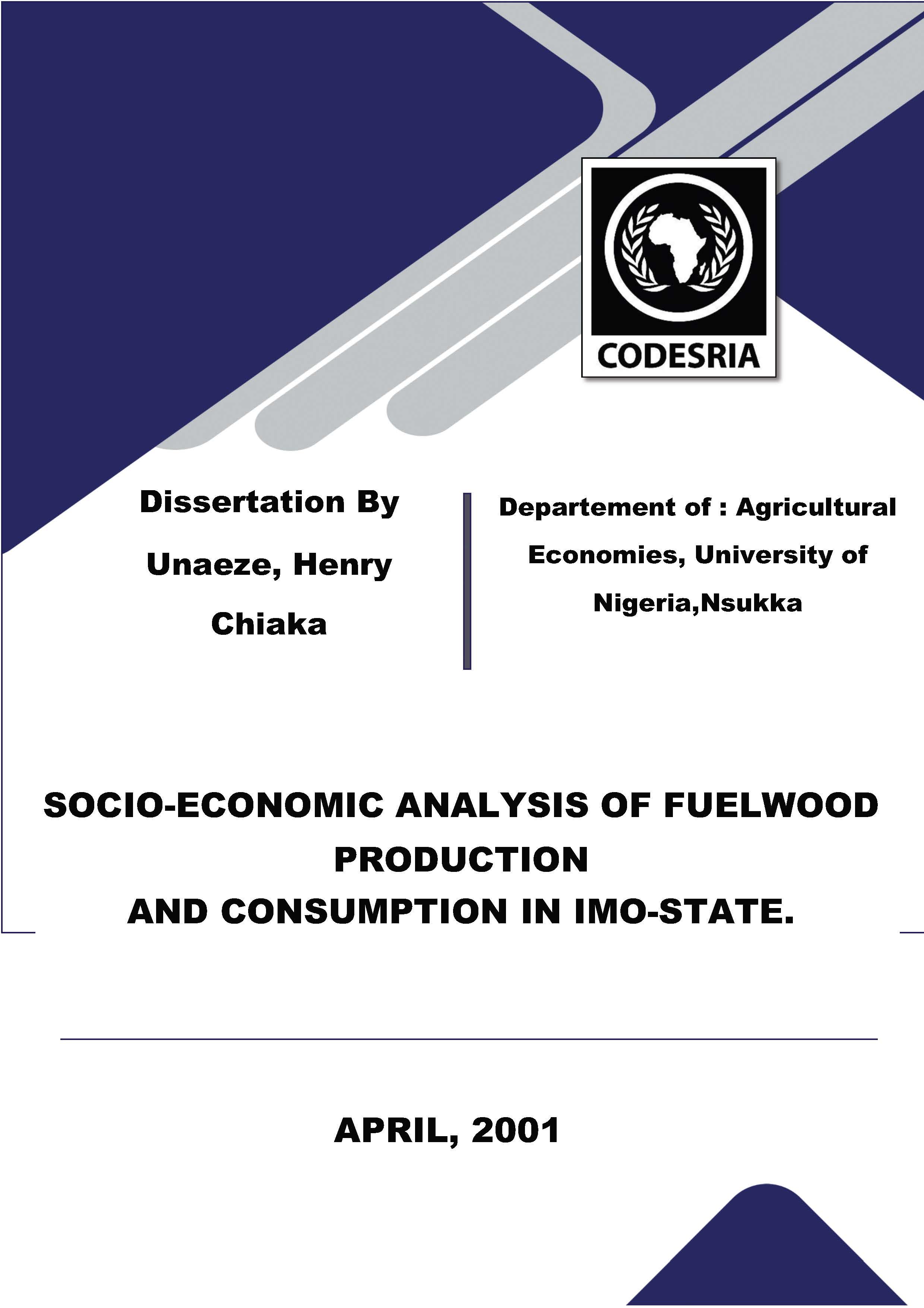SOCIO-ECONOMIC ANALYSIS OF FUELWOOD PRODUCTION AND CONSUMPTION IN IMO-STATE.
Keywords:
Fuelwood, energy sources, consumption, Imo state, NigeriaSynopsis
This study was carried out to investigate the socio-economic analysis of
fuelwood production and consumption in Imo State as there has been Jack of
information about socio-economic ramifications of fuelwood production and
consumption in the state. A multi - stage sampling techniques was used in the
selection of 400 rural and urban respondents. The data obtained were analysed
using percentage, multiple regression mode! and chow test techniques.
It was found out that among the various socio-economic factors
considered in this study, only total area under cultivation, measures in hectares
(Ha)' and amount of labour available measured in numbers (Nos.) were found to
influence fuelwood production in positive direction, while the consumption rate
of fuelwood were influence by total self produced fuelwood as a percentage of
total consumed fuelwood (fsp) and household size (Hs). The chow-test result
showed that there was a significant difference between the amount of fuelwood
consumed by rural and urban households. And majority of rural farming
households were assisted by their children while producing or sourcing fuelwood
and time spent by most respondents (52.5%) are 2 - 4 hours and frequency of
producing this woody resource is three times a week.
lt was also found that in spite of the importance of fuelwood in rural
energy system, its production and consumption impose dangers to those directly
involved in its utilization ( drudgery deforestation and health problems associated
Downloads
References
Adams, R. Stepick, C., Uliuski, C. and Williamson D. ( 1980). "The impact of decreased fuelwood availability on nutritional status". International Journal of Forestry and Forest Industries, 37 (74): 29-34.
Adeyoju, S.K. (1965). "The fores! reproduces of Nigeria", Nigerian Geographical Journal 8 (2) 115 - 126.
Agarwa;, Bina (1983). Diffusion of rural innovations: Sorne Analytical Issues and the case ofwood-Burning stoves, World Development, 11 (4) 359- 76.
Agarwal B. (1986). Cold hearths and barren slopes. London: Zed Books.
Apsey, M. and Reed, L. (1995). "World timber, reproduces Outlook, current perceptions" Discussion paper, Vancower. Canada: Council of Forest Industries.
Arnold, J.E.M and .Jongma, J. (1977). "Fuelwood and Charcoal in Developing countries". Unasylva FAO 29: (118).
AS TRA, (1981 ). "Rural Energy Consumption patterns: A field Stud"y, lndian lnstilutie of Science. Bangalore:
Bajracharya D., (1983), "Deforestation in the food-fuel context: Historical and political perspectives from Nepal". Mountain Research and Development 322-40.
Barnes, C. (1982). The hislorical contexl ofthefuelwood situation inKisii District. Unpublished Ms.C. thesis were submitted.
Bhaduri, T. and V. Surin (1980). "Community forestry and women Headloaders", in Community Forestry and People 's Participation Seminar Report, Ranchi Consortium for Community forestry November, 20-22.
Bravo-Ureta, (1986). Technical Efficiency Measures for Dairy Farms, Based on probabilistic frontier fonction models. Canadian Journal of Agricultural Economies, 34(30). 399 - 415.






